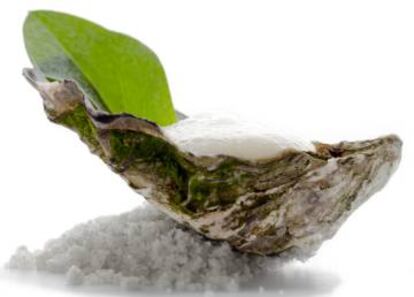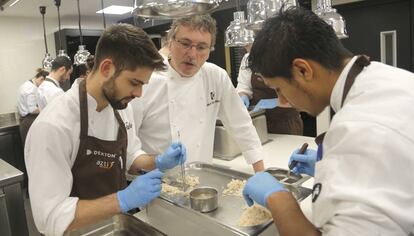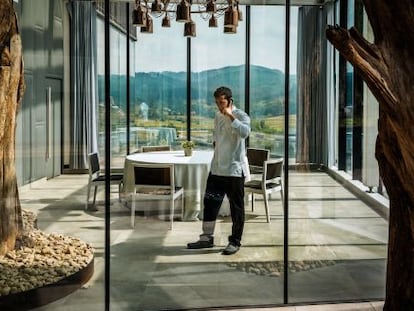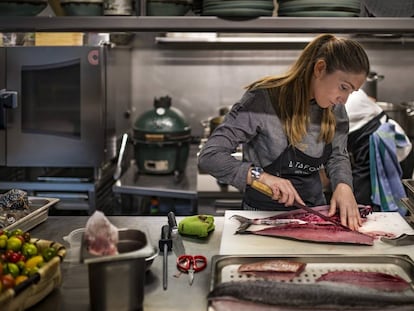How Spanish chefs are still revolutionizing the global food scene
A mix of tradition, innovation, fresh produce and healthy competition is driving the industry forward

Out of the top 10 restaurants in The World’s 50 Best Restaurant list, three are Spanish. Created in 2002 by the London-based Restaurant Magazine, this famous ranking is known as the Oscars of the food world, and for years it has bestowed honor upon honor on Spain’s cuisine.
The numbers evidence the power of Spanish cuisine on the global stage.
El Celler de Can Roca, a Catalan eatery run by the brothers Roca, earned the top position in the World’s 50 Best in 2013 and again in 2015 (in 2018 it ranks second). Years before that, in 2002, Ferran Adrià’s elBulli occupied the top post, where it returned in 2006, remaining there until 2010. This record is yet to be beaten.

This year’s list of the world’s 100 top restaurants was unveiled last Tuesday in the northern Spanish city of Bilbao, and 13 Spanish establishments made it into the list, a number surpassed only by the United States with 14.
“This is not a new thing. Spain has been standing out for a long time,” says José Carlos Capel, a food critic at EL PAÍS and founder of the annual symposium Madrid Fusión.
“There are many exceptional restaurants in Spain,” adds the French chef Joël Robuchon, who has more Michelin stars (31) than any other chef in the world, and who owns a home in the Spanish resort town of Calpe, on the Mediterranean coast.
Robuchon also expresses admiration for Spain’s food culture. “If there is no tradition, there is no evolution,” adds Capel. “And Spain has managed both evolution and revolution.”
If popular home cooking was at the heart of it all, the New Basque Cuisine spearheaded by Juan Mari Arzak and Pedro Subijana in 1976 represented Spain’s very first avant-garde culinary movement. The veteran French chef Paul Bocuse, himself the founding father of Nouvelle Cuisine, showed an interest in his Basque counterparts’ ideas, signaling the beginning of a fruitful relationship.
New Basque Cuisine praised tradition through dishes that had been either forgotten or lost; it prized the quality of the product above everything else, and it embraced innovation. It was a revolution, and it was the first of more to come. Nearly two decades later, in the 1990s, the Catalan chef Ferran Adrià headed another revolutionary movement.

“elBulli filled the world with creativity and it planted the seed for many projects that bloomed and have endured to this day,” says Andoni Luis Aduriz, the Basque chef who helms Mugaritz, ranked ninth on the 50 Best list and in possession of two Michelin stars. Aduriz was one of Adrià’s protégés, and so was Albert Adrià, the master’s younger brother, whose Barcelona-based Tickets restaurant made it into the 32nd position on the Restaurant list. Tickets has also been awarded the National Gastronomy Prize in Spain.
Ferran Adrià’s contribution to cuisine can be summed up in around 20 points that build on that Basque legacy and which associate cuisine with concepts such as beauty, poetry, provocation, complexity, culture, creativity and even magic. Adrià created a philosophy of food, and in 2004 Time magazine named him one of the 10 most innovative personalities on the planet. In 2011, Adrià decided to shut down elBulli.
“Ferran’s revolution blazed a trail and the next generations have continued down that line,” says Capel, who founded the popular Madrid Fusión event in 2003. Before that, in 1999, another key event for the exchange of culinary knowledge had been created in the Basque region: San Sebastián Gastronomika.
“Spain has created a gastronomic ecosystem with many interesting actors, from symposiums to specialized press to institutions like the Basque Culinary Center,” says Aduriz. “This mix ensures that we do not fall asleep, and it makes us Spanish chefs very competitive.”
The Magnificent 13
The heirs of those early Basque and Catalan innovators currently make up the bulk of the Spanish representatives on The World’s 50 Best list: El celler de Can Roca in Girona, Mugaritz in Rentería, Asador Etxebarri in Atxondo, Disfrutar, Tickets and Enigma in Barcelona, Arzak in San Sebastián, Azurmendi and Nerua in Bilbao, Quique Dacosta in Denia, Martín Berasategui in Lasarte, Elkano in Getaria, and DiverXo in Madrid.
In this environment, chefs share their knowledge while vying to surprise one another. This gives rise to spectacular ideas that have the potential to reach a lot of people. “Spain is a huge tourist destination, and that affords chefs more opportunities when it comes to showing off our proposals, to make a name for ourselves,” adds Aduriz.
Last year, Spain welcomed a record 82.2 million tourists. Of these, 15 million came for the food, according to Rafael Ansón, president of the Royal Gastronomy Academy. “After their trip, what they valued the most was the food because of the quality of the produce, the mix of tradition and innovation, and the food culture based on tapas,” says Ansón, who figures that the industry contributes around 25% of GDP.
At this year’s Madrid Fusión, held in January, two main ideas emerged: cities as the epicenters of culinary effervescence, and the fourth generation of haute cuisine chefs.
“There is a whole set of rebellious and non-conformist chefs who are strong on technique but who also have strong personalities,” says Capel. They are between 30 and 45 years old, and they are building on the legacy of New Basque Cuisine and Ferran Adrià’s avant-garde experimentation. Time has passed since then, but the culinary revolution is still underway.
English version by Susana Urra.
Tu suscripción se está usando en otro dispositivo
¿Quieres añadir otro usuario a tu suscripción?
Si continúas leyendo en este dispositivo, no se podrá leer en el otro.
FlechaTu suscripción se está usando en otro dispositivo y solo puedes acceder a EL PAÍS desde un dispositivo a la vez.
Si quieres compartir tu cuenta, cambia tu suscripción a la modalidad Premium, así podrás añadir otro usuario. Cada uno accederá con su propia cuenta de email, lo que os permitirá personalizar vuestra experiencia en EL PAÍS.
¿Tienes una suscripción de empresa? Accede aquí para contratar más cuentas.
En el caso de no saber quién está usando tu cuenta, te recomendamos cambiar tu contraseña aquí.
Si decides continuar compartiendo tu cuenta, este mensaje se mostrará en tu dispositivo y en el de la otra persona que está usando tu cuenta de forma indefinida, afectando a tu experiencia de lectura. Puedes consultar aquí los términos y condiciones de la suscripción digital.
More information
Archived In
Últimas noticias
There is as much life left to discover on planet Earth as that which is already known
Dozens presumed dead, around 100 injured in fire at Swiss Alps bar during New Year’s celebration
Is porn for women different from conventional porn? We spoke to those who make it
Cartagena de Indias is sinking: What can the city do to mitigate it?
Most viewed
- Reinhard Genzel, Nobel laureate in physics: ‘One-minute videos will never give you the truth’
- David King, chemist: ‘There are scientists studying how to cool the planet; nobody should stop these experiments from happening’
- Oona Chaplin: ‘I told James Cameron that I was living in a treehouse and starting a permaculture project with a friend’
- Sinaloa Cartel war is taking its toll on Los Chapitos
- The Interoceanic Train, the Mexican alternative to the Panama Canal











































